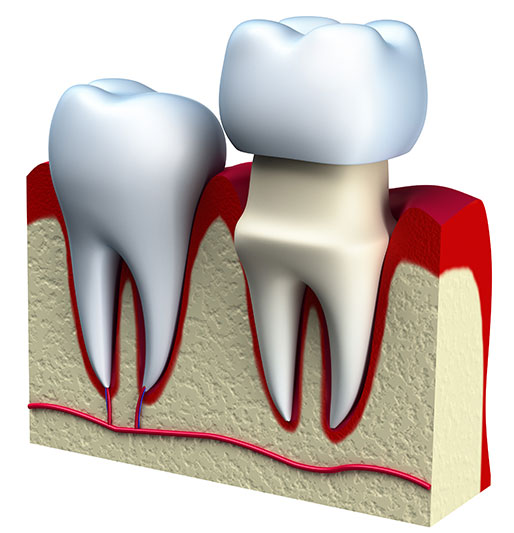
Dental trauma is frequent among children and teens, but it can happen to anyone of any age. One of the most common causes of dental trauma is sports-related accidents, but they can also occur as the result of car accidents or falls. Even a seemingly minor injury should be addressed as soon as possible. At Pinnacle Oral Surgery Specialist, we can assess the extent of your dental trauma, and take the measures necessary to protect the health of your teeth and mouth.
Damaged Teeth
Most chips and cracks can be easily restored with dental bonding. For larger damages, a dental crown, or restorative “cap” may be required. However, if the damage extends into the pulp of the tooth, a root canal may be required. This treatment involves removing the pulp and the root of the tooth to clear away any bacteria and infection. At the end of the procedure, the tooth is capped with a crown. For seriously damaged teeth, such as those that are split, the best solution may be to extract them and replace them with a restorative option, such as a bridge or dental implant.
Dislodged Teeth
Sometimes, the impact can dislodge a tooth. It may be pushed up into the socket, or it may come out of the socket slightly. Either way, we can reposition the tooth to its original location and stabilize it. In many cases, a root canal treatment will be needed.
It is also possible that your tooth may come completely out of the socket. It is still possible to replace the tooth. Be sure to find the tooth and clean it off, preserving it in a sealed jar of milk until you can get to the office. We can reseat the tooth and stabilize it with a splint.
Root Fractures
Injuries to the tooth can include horizontal root fractures. Fractures closer to the tip of the root have a better chance of healing properly. Root fractures close to the crown have less of a chance for long-term success, and we may need to stabilize the tooth with a splint for the best results.
Bone Injuries
Dental injuries may include injuries to the jawbone or other facial bones. Much like any other bone, the jawbone needs to be set. However, your face cannot be placed in a cast. Instead, there are a few ways in which bone injuries can be set. The first is with the wiring. Wire limits the motion of your jaw while the bones heal. The other option is metal plates and screws. While plates and screws allow you range of motion to eat and speak, there are many instances in which the hardware is left in permanently.
Soft Tissue Injuries
Injuries to the teeth can result in soft tissue injuries, such as lacerations. The soft tissues of your face are delicate and contain many nerves. Close to your mouth, the soft tissues also contain salivary glands and ducts. The nerves, glands, and ducts need to be carefully repaired to restore full function. An oral surgeon is an expert in the anatomy of your face and will be able to provide you with the best possible results.
